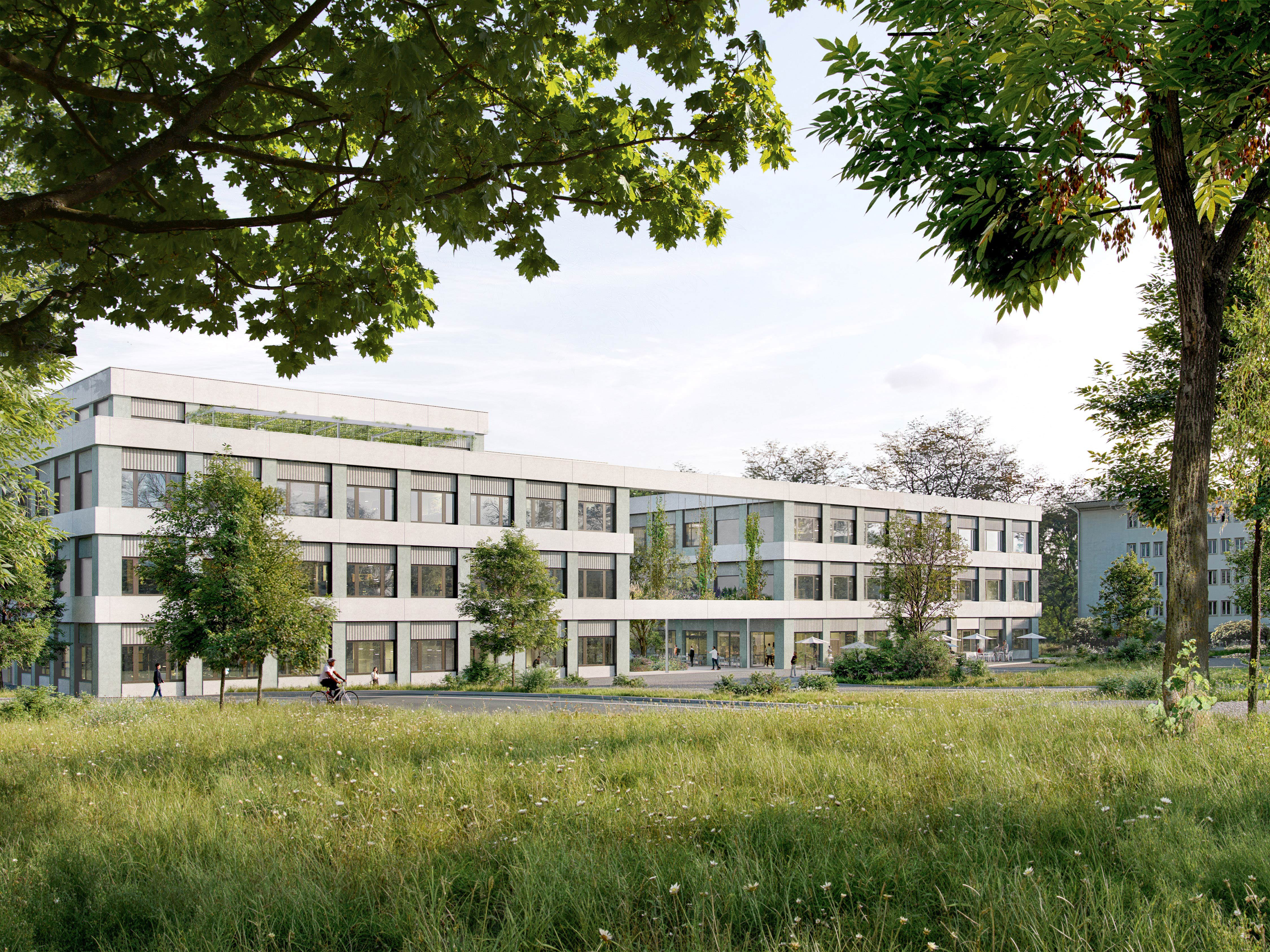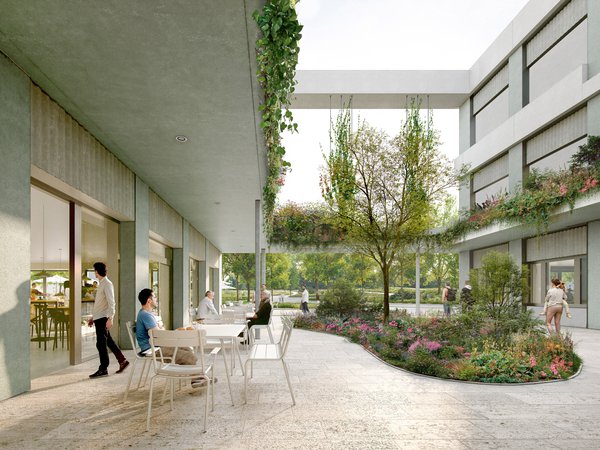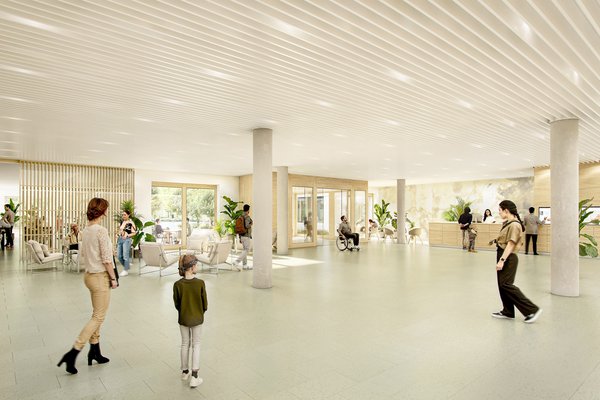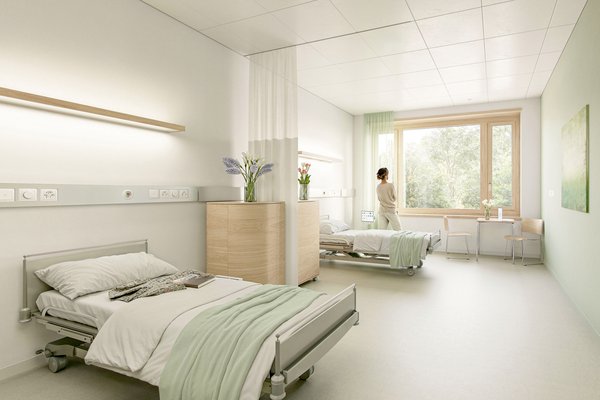

The building permit submission marks a key milestone in the NKSSH project to modernize the Schaffhausen Hospitals on the Geissberg campus.
For decades, the Cantonal Hospital of Schaffhausen has been a cornerstone of regional healthcare. Yet much of its infrastructure dates back to the 1950s and 1970s and no longer meets the needs of a modern acute care facility. To ensure high-quality care in the years ahead, a competition was held to design and deliver a comprehensive new building and renovation project. The winning project, "Canotila," was developed under the leadership of Bollhalder Walser Architektur (design and architectural planning). IB was commissioned as general planner and was responsible for overseeing architectural execution.
The new facility will be compact, with four levels above ground and two below. A central circulation spine enhances orientation and shortens internal routes. Visitors will enter through a landscaped courtyard, offering a calming transition between the natural surroundings and the hospital interior.
At the heart of the new building is a welcoming entrance hall with a café bistro, designed to create an inviting, people-centered atmosphere. The layout follows the principle of “the doctor comes to the patient”: highly technical areas are located in the north wing, with moderately technical zones in the south. Diagnostic services are organized interdisciplinarily on the ground floor, while hospital support functions are distributed across the upper and lower levels.
The new building integrates seamlessly into the existing site and will serve as the gateway to a future healthcare campus. Outdoor spaces, featuring forest elements and island-like green zones, reinforce the connection between architecture and nature. Emergency access and deliveries are routed to the north, screened from the street by dense planting.
The submission of the building permit in September 2025 marked a significant milestone in securing the region’s long-term healthcare provision.




